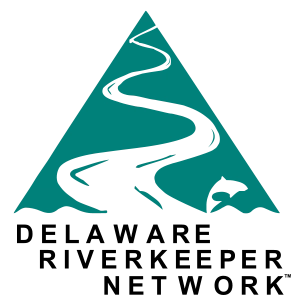Delaware Riverkeeper Network defends Goose Creek and Clean Water Act in West Goshen Sewer Authority v. U.S. EPA & Delaware Riverkeeper Network. Settlement reached.
Goose Creek is a small stream that starts in West Chester and West Goshen in Chester County, PA, and flows down into Chester Creek, and ultimately the Delaware River, at the City of Chester. But for decades, this small stream has been polluted with incredible levels of nutrient pollution that wreaked havoc on the ecology and destroyed the “fishable” qualities of this once-lovely stream, while also impacting downstream areas and communities. Delaware Riverkeeper Network worked with the local watershed group to conduct monitoring of Goose Creek over the years with trained community monitors to help document these harms.

In 1996 the Delaware Riverkeeper Network was responsible for the filing of a legal action that resulted in increased protections for Goose Creek. Our legal action resulted in the identification of regulatory standards (Total Maximum Daily Loads, or TMDLs) that would reduce the level of nutrient pollution that could be discharged into the Creek. As part of the follow up to this successful litigation, the USEPA proposed the restoration of Goose Creek in 2008 with a pollution budget. In 2012 dischargers challenged the EPA plan in court. Given DRN’s history of protecting Goose Creek and advancing Clean Water Act provisions, DRN filed to intervene in 2013 to prevent a harmful settlement and to instead ensure the best protections possible for this stream (West Goshen Sewer Authority v. U.S. EPA & Delaware Riverkeeper Network). Judge Filipe Restrepo of the US District Court for the Eastern District of PA found that the DRN’s interests in protecting the Delaware River, including its Goose Creek tributary, could be affected by the outcome of the case being negotiated between the dischargers and the EPA, and determined that the Delaware Riverkeeper Network’s interests were not otherwise being adequately represented. With our official intervention status we were able to help focus and steer the settlement conversation to one that would put in place stronger protections for Goose Creek and set a good precedent for other streams, communities and dischargers.
Over the last 5 years, the Delaware Riverkeeper Network has engaged as an active participant in the legal action and settlement negotiations. In 2018 an agreement was struck that resulted in the West Goshen Sewer Authority (WGSA) committing to purchase and install new breaking technology: a CoMag ballasted flocculation system (“CoMag System”). This technology has been piloted by WGSA to demonstrate substantial reduction in nutrient (phosophorus) pollution of Goose Creek. While the CoMag System is being installed, West Goshen has already engaged in steps to reduce the nutrient pollution and has committed to expand and plant a native riparian buffer on municipal property to improve Goose Creek ecosystem functioning and resilience and help demonstrate how streamside property owners can create important habitat, reduce streambank erosion and stormwater runoff, and help stream health by minimizing lawn and planting native vegetation. DRN played a role in advocating to obtain the best possible agreement to improve the stream and feel that the result is good and hopefully precedent setting for others.
At the end of 2018, Goose Creek experienced the first relief from the decades of nutrient pollution as the first phase of the agreement went into place, and nutrient levels fell significantly. This spring, Goose Creek is enjoying the first phase of its long-needed recovery, with immediate improvements to fish, insects, and the entire health of this valued ecosystem. This success story represents the good that can be achieved when community organizations, such as DRN, work effectively with regulators and municipalities to invest in water quality improvement to benefit the community and future generations. DRN anticipates that other dischargers will look to the COMag System and the benefits that can be achieved from new technology and that the regulators will require similar common-sense investments in healthy streams and ecosystems.
